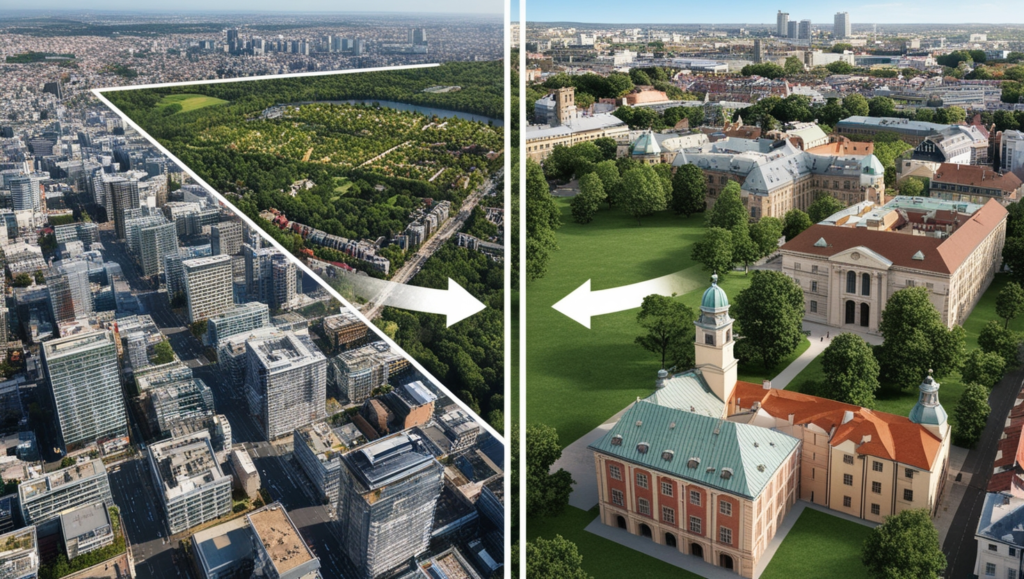In the ever-evolving landscape of urban development and real estate, understanding key concepts is crucial for both professionals and enthusiasts. One such concept that has gained significant traction in recent years is TDR.
But what exactly is the TDR full form in real estate? Let’s dive deep into this topic and explore its various facets.
Table of Contents
What is the TDR Full Form in Real Estate?
The TDR full form in real estate stands for Transferable Development Rights. This innovative land use management tool has revolutionized the way we approach urban planning and development. But to truly grasp its significance, we need to delve deeper into its meaning and implications.
Understanding the TDR Full Form in Real Estate
Transferable Development Rights, or TDR, is a mechanism that allows landowners to sell or transfer the development rights of their property to another landowner or developer. This concept is particularly useful in urban areas where there’s a need to balance development with conservation efforts.
The TDR full form in real estate represents a system where the right to develop a piece of land can be separated from the land itself and transferred to another location. This innovative approach helps in preserving environmentally sensitive areas, historical sites, and open spaces while still allowing for urban growth and development.
How Does TDR Work in Real Estate?
Now that we understand the TDR full form in real estate, let’s explore how this system actually works in practice.
- Designation of Areas: Local governments designate specific areas as “sending” and “receiving” zones.
- Transferring Rights: Landowners in sending zones can sell their development rights to developers or property owners in receiving zones.
- Development in Receiving Zones: Buyers of these rights can then use them to increase the density or height of their projects beyond what local zoning would typically allow.
- Preservation of Sending Zones: The original landowner retains ownership of the land but agrees to place a permanent conservation easement on it, ensuring its preservation.
Types of Transferable Development Rights
Understanding the different types of TDR is crucial for anyone looking to delve deeper into the concept of the TDR full form in real estate. Here are the main types:
1. Road TDR
This type of TDR is generated when land is acquired for road construction. Landowners who surrender their land for this purpose receive TDR certificates, which they can use to develop their remaining land to a higher Floor Space Index (FSI).
2. Reserved Plots TDR
When land is reserved for public purposes like parks, gardens, or schools, the landowners are granted TDR certificates. These can be used to develop other land to a higher FSI.
3. Slum TDR
This type is generated during slum redevelopment projects. Slum dwellers who are relocated as part of these projects receive TDR certificates, which they can use to develop their new homes to a higher FSI.
4. Heritage TDR
Owners of heritage buildings who preserve or restore these structures are granted TDR certificates. These can be used to develop other land to a higher FSI.

Benefits of TDR in Real Estate
The TDR full form in real estate represents a system that offers numerous benefits to various stakeholders in the real estate sector. Let’s explore some of these advantages:
For Landowners:
- Financial Compensation: Landowners can sell their development rights for profit, providing a significant source of income, especially in high-value areas.
- Flexibility: They can choose to develop their land, sell their TDR, or do a combination of both.
- Conservation: TDR allows landowners to protect their land from development or promote sustainable practices.
- Preservation: It enables the preservation of historic buildings and neighborhoods.
For Developers:
- Increased Development Capacity: Developers can use TDR to increase the allowable development density on their properties.
- Cost Reduction: TDR can help reduce land acquisition costs, as TDR credits are often cheaper than land in developable areas.
- Greater Flexibility: It allows development in areas already well-served by infrastructure and public transportation.
- Sustainability: TDR promotes sustainable development by encouraging building in already developed areas.
For Communities:
- Preservation of Open Spaces: TDR helps in protecting environmentally sensitive areas, farmlands, and forests.
- Smart Growth: It encourages development in areas with existing infrastructure, reducing urban sprawl.
- Affordable Housing: TDR can be used to incentivize the construction of affordable housing units.
- Economic Development: It can direct development to areas where it’s most needed, boosting local economies.
Calculating TDR and FSI
Understanding how to calculate TDR and Floor Space Index (FSI) is crucial for anyone dealing with the TDR full form in real estate. Let’s break down these calculations:
FSI Calculation
FSI is calculated using the following formula:
FSI = Total built-up area / Plot area
For example, if a building has a total built-up area of 10,000 square feet on a 5,000 square feet plot, the FSI would be 2 (or 200%).
TDR Calculation
The formula for TDR calculation is:
TDR = Gross area of plot relinquished * Allowable zone FSI
For instance, if a landowner surrenders a 10,000 square feet plot in a zone with an FSI of 2, they would receive 20,000 square feet of TDR credits.
TDR Markets in India
The market for TDR in India varies significantly from city to city. Here’s an overview of some major markets:
Mumbai
Mumbai has the largest and most active TDR market in India. TDR prices here are the highest, often exceeding Rs. 100,000 per square meter. The high demand is due to the city’s steep land prices and scarcity of developable land.
Delhi
While smaller and less organized than Mumbai’s, Delhi’s TDR market is still significant. TDR prices here are lower, typically around Rs. 50,000 per square meter, but have been rising in recent years.
Bengaluru
Bengaluru’s TDR market is growing rapidly due to the city’s rapid urbanization. TDR prices here are lower than in Mumbai and Delhi, usually around Rs. 30,000 per square meter, but are on an upward trend.
Hyderabad
Hyderabad has the smallest TDR market among these cities, but it’s growing. TDR prices here are the lowest, around Rs. 20,000 per square meter. Despite being less organized, the market is in high demand due to the city’s rapid growth.

Criticisms of the TDR Concept
While the TDR full form in real estate represents an innovative approach to urban planning, it’s not without its critics. Here are some of the main criticisms:
- Unplanned Development: TDR has been blamed for leading to haphazard development in suburban areas, resulting in congestion and infrastructure strain.
- Increased Real Estate Prices: The cost of TDR is often passed on to buyers, making housing less affordable in prime locations.
- Gentrification: The TDR system can lead to the displacement of low-income residents as property values rise.
- Complexity: The system can be difficult for both buyers and sellers to understand, leading to potential fraud or misuse.
- Environmental Concerns: In some cases, TDR has been used to circumvent environmental regulations, leading to development in ecologically sensitive areas.
-
What is the TDR full form in real estate?
The TDR full form in real estate is Transferable Development Rights.
-
Are there any criticisms of the TDR system?
Yes, some criticisms include concerns about unplanned development, potential price inflation, and the complexity of the system.
-
How is TDR calculated?
TDR is calculated by multiplying the gross area of the surrendered plot by the allowable zone FSI (Floor Space Index).
-
Can TDR be used to preserve historic buildings?
Yes, TDR can be used to preserve historic buildings through Heritage TDR, where owners receive development rights for preserving or restoring heritage structures.
-
How does TDR benefit landowners?
TDR benefits landowners by allowing them to sell development rights without selling their land, providing financial compensation and flexibility.
Conclusion
The TDR full form in real estate – Transferable Development Rights – represents a powerful tool in urban planning and development. It offers a way to balance the competing needs of urban growth and environmental conservation, providing benefits to landowners, developers, and communities alike. However, like any complex system, it comes with its own set of challenges and criticisms.
As we continue to grapple with issues of sustainable urban development, tools like TDR will undoubtedly play a crucial role. Whether you’re a real estate professional, an urban planner, or simply someone interested in the future of our cities, understanding the concept of TDR is essential. We’d love to hear your thoughts on this topic. Have you had any experiences with TDR in your area? Do you think it’s an effective tool for urban planning? Share your opinions in the comments below!
